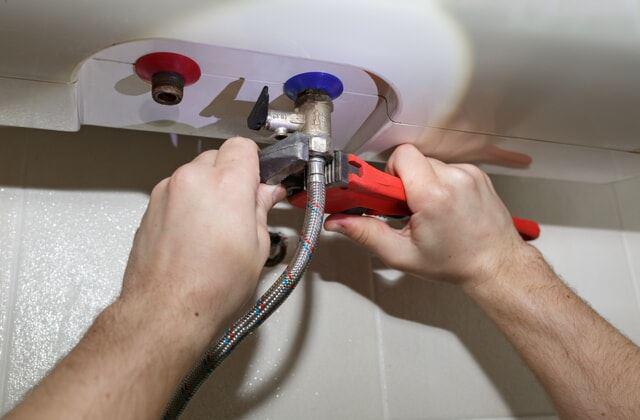We have uncovered this great article relating to Tips For Maintaining Your Hot Water Heater down the page on the internet and concluded it made good sense to write about it with you on this site.

Hot water is essential for day-to-day comfort, whether it's for a refreshing shower or cleaning meals. To ensure your warm water system runs efficiently and lasts much longer, regular upkeep is essential. This write-up supplies practical pointers and insights on just how to preserve your home's warm water system to avoid disturbances and costly fixings.
Introduction
Keeping your home's hot water system could seem daunting, however with a few basic steps, you can guarantee it operates efficiently for years to find. This overview covers whatever from recognizing your hot water system to do it yourself maintenance pointers and knowing when to employ professional assistance.
Importance of Preserving Your Warm Water System
Regular upkeep not only prolongs the life-span of your hot water system however additionally ensures it runs efficiently. Overlooking upkeep can lead to reduced performance, higher power costs, and even premature failing of the system.
Signs Your Hot Water System Requirements Upkeep
Knowing when your warm water system requires attention can avoid significant issues. Look out for indications such as irregular water temperature, unusual noises from the heating unit, or corroded water.
Flushing the Water Heater
Flushing your hot water heater gets rid of sediment accumulation, enhancing performance and prolonging its life.
Checking and Replacing Anode Rods
Anode poles protect against deterioration inside the tank. Examining and changing them when worn is important.
Complicated Problems Needing Expert Help
Examples include major leaks, electrical problems, or if your water heater is consistently underperforming.
Regular Specialist Upkeep Perks
Expert maintenance can include comprehensive inspections, tune-ups, and ensuring conformity with safety and security requirements.
Checking and Changing Temperature Setups
Readjusting the temperature level settings ensures optimum efficiency and security.
DIY Tips for Maintenance
You can execute numerous maintenance jobs on your own to maintain your warm water system in leading problem.
Checking for Leaks
Routinely check pipelines and connections for leaks, as these can lead to water damage and higher costs.
Recognizing Your Warm Water System
Prior to diving into maintenance tasks, it's helpful to recognize the standard parts of your hot water system. Usually, this includes the water heater itself, pipelines, anode poles, and temperature controls.
Monthly Maintenance Tasks
Normal month-to-month checks can assist catch minor concerns prior to they intensify.
Testing Stress Alleviation Valves
Checking the pressure safety valve guarantees it works correctly and prevents too much pressure buildup.
Shielding Pipelines
Protecting hot water pipes lowers warm loss and can conserve energy.
When to Call a Specialist
While DIY upkeep is useful, some concerns call for expert expertise.
Conclusion
Routine maintenance of your home's hot water system is crucial for effectiveness, long life, and cost financial savings. By following these ideas and recognizing when to seek specialist help, you can make sure a reliable supply of hot water without unanticipated disturbances.
How to Maintain an Instant Hot Water Heater
Before tinkering with your hot water heater, make sure that it’s not powered on. You also have to turn off the main circuit breaker and shut off the main gas line to prevent accidents. Also turn off the water valves connected to your unit to prevent water from flowing into and out of the appliance. 2. When you’re done, you have to detach the purge valves’ caps. These look like the letter “T” and are situated on either side of the water valves. Doing so will release any pressure that has accumulated inside the valves while at the same time avoid hot water from shooting out and burning your skin. 3. When the purge valves’ caps are removed, you have to connect your hosing lines to the valves. Your unit should have come with three hoses but if it didn’t, you can purchase these things from any hardware or home repair shops. You can also get them from retail stores that sell water heating systems. Read the user’s manual and follow it to complete this task properly. When the hosing lines are connected, open the purge port’s valves. 4. You should never use harsh chemical cleaners or solutions when cleaning your unit. Make use of white vinegar instead. It should be undiluted and you’ll probably use about 2 gallons. 5. Now flush your water heater. This task should probably take about 40 minutes. We can’t give you specific directions for this because the procedure is carried out depending on the type, model and brand of your heater. With that being said, refer to the user’s manual. 6. When you’re done draining the unit, you have to turn off the purge port valves again. Remove the hosing lines that you earlier installed on each of the water valves. Put the valve caps (purge port) back in their respective places and be very careful so as not to damage the rubber discs that are found inside these caps. 7. Now that everything’s back in place, check your user’s manual again to find out how to reactivate your water heating system. 8. Once it is working, turn one of your hot water faucets on just to let air pass through the heater’s water supply pipes. Leave the tap on until water flows smoothly out of it. https://www.orrplumbing.com/blog/2014/september/how-to-maintain-an-instant-hot-water-heater/

Do you appreciate reading up on What Kind of Maintenance Do Water Heaters Need?? Post feedback below. We'd be glad to find out your thoughts about this article. Hoping that you visit us again in the future. I beg you take a moment to promote this post if you enjoyed reading it. Many thanks for going through it.
Call Today